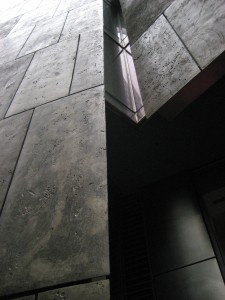After the phenomenal success of the Bilbao Guggenheim, the conventional wisdom had it that signature buildings were the way for museums to build attendance. Never mind the collection, the so-called Bilbao Effect would ensure that the public would come. In an age obsessed with marketing, a pithy phrase is all, and nobody bothered to check if eye-catching museum architecture really had this effect. It doesn’t, as the Experience Music Project in Seattle and the Denver Museum of Art showed. It doesn’t even work if you are in Manhattan on busy West 53rd Street, next door to the Museum of Modern Art. The impending demise of the American Folk Art Museum should be a warning to museum boards everywhere. When the $21 million building opened in 2001, the design, by Tod Williams and Billie Tsien, was hailed as an architectural triumph. “The museum’s façade is already a Midtown icon,” wrote New York Times architecture critic Herbert Muschamp in a gushing review. It may have been an icon, but it was a poor entrance, almost invisible, mute, blank-faced—a façade only an architecture critic could love. Attendance at the Folk Art Museum, which was intended to help pay for the building, was lower than expected. Today, the museum has defaulted on its construction bond, sold its building, moved to other premises, and is even considering liquidating the collection. That is the Bilbao Effect.



Trackbacks/Pingbacks